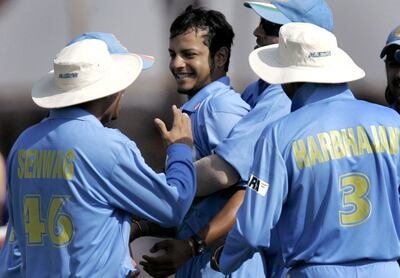India bowler Deepti Sharma stirred a hornet's nest when she ran out England batter Charlie Dean at the non-striker's end during the Lord's ODI last month.
Dean was batting on 47 and taking the hosts to a possible victory when Deepti caught the batter out of the crease and ran her out, sealing a 16-run victory and a 3-0 series triumph.
A bowler running a batter outside the crease at the non-striker's end before delivering the ball has been one of the most contentious issues that has split the cricket world down the middle.
One half sees it is a sneaky way to dismiss a batter before the ball is in play. The other believes batters gain unfair advantage by getting a head start at a time when run outs are being decided by millimetres.
For long, the dismissal itself was classified under 'Unfair Play' section of the laws of cricket that are governed by the Marylebone Cricket Club (MCC). This year, it was moved to the 'Run Out' section, making it a legitimate mode of dismissal.
Still, the stigma remains. And also the term 'Mankad', coined after late Indian all-rounder Vinoo Mankad who ran out Bill Brown through that fashion during a tour of Australia in 1947.
Even though the laws around it are now clear, bowlers are eyed with suspicion for resorting to that mode of dismissal.
England all-rounder Moeen Ali, who captained his team to a T20 series victory in Pakistan, said "even when I played cricket as a kid in the garden, it's not my thing" and hoped the dismissal did not become a common practice. He told The Telegraph that the world body should consider removing the dismissal altogether.
It is an issue close to the heart of former India spinner Murali Kartik. The left-arm spinner is an expert in the matter; he has ran non-strikers out five times in his career. And he is proud of that fact.
"I never thought of it as a stigma. [Unfortunately] it's like the policeman being treated as a cheater for doing the right thing," Kartik told The National.
"The ones who are doing wrong are being seen as victims. The ones who are actually calling the batsmen out now have got the stigma."
During the match between India and England, batter Dean left her crease early 73 out of the 80 balls she faced - as pointed out by journalist Peter Della Penna on Twitter - including her dismissal. However, it is Deepti and the India team whose intentions are being questioned.
For Kartik, it is a case of who is trying to gain an unfair advantage.
"It was always the batsman trying to gain unfair advantage when the margins are so slim. The argument given is 'he was not trying to do it wilfully'. If he or she is not trying to go towards the batting crease, they should be going towards mid-on or mid-off. Why it is that when a bowler misses the front line by millimetres, it is a no-ball? He is not doing it wilfully.
"If you want to gain advantage, why not walk in from behind the umpire? If you want to gain momentum, by the time the bowler reaches the bowling mark and releases the ball, you are in a position to charge down the track. No one is asking batsman to stay static."

Kartik believes it is a fair mode of dismissal just like others, and wants the suspicion around it to dissipate.
"Despite this being designated as a run out, people are still calling it names and the bowler who does it is seen as a criminal. It is a fair means of getting people out.
"Just like a batsman loses his balance trying to play a flick shot off a spinner and he or she is stumped down the leg side. He is not trying to take a single, he just loses his balance. It's a fair form of dismissal. That time, you talk of the wicketkeeper having fast hands and having presence of mind to whip the bails off."
What has also irked Kartik, and many former Indian cricketers, is the association of the dismissal with Mankad, whose family fought for years to have the term removed from cricket conversation. Last year, Mankad's last surviving son Rahul wrote to the BCCI to stop using the term. But it remains part of normal parlance. Rahul passed away earlier this year.
"There is no need to denigrate somebody for doing the right thing. Next time it will be called Katik-ed or Deepti-ed. It is a run out and let it be a run out. Why do you want to bring someone down who is doing the right thing?" questioned Kartik.
"If somebody claims a wrong catch, then it should be called according their name. Or if someone does not walk off after edging, it should be named after them. I would love to see that day."




